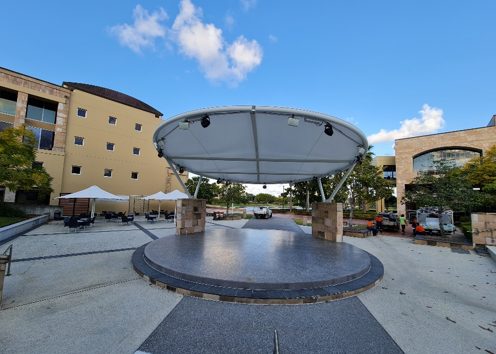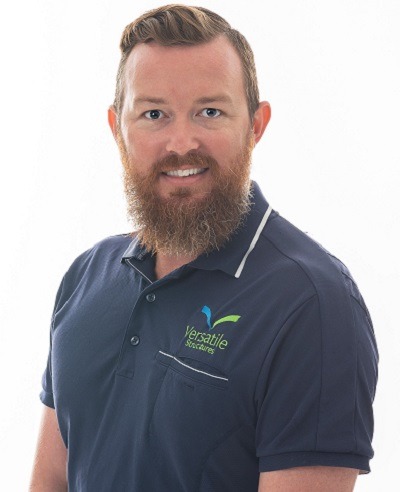YOU ARE HERE:

Shade Structures for Universities and Educational Institutions in Brisbane
Jamie Howard In Shade Structure
Brisbane, Australia, is known for its sunny climate, making it a fantastic place for outdoor activities and learning. However, this abundant sunshine can also pose challenges, particularly for universities and educational institutions. To create a comfortable and conducive environment for students, faculty, and staff, the installation of shade structures becomes imperative. In this article, we will explore the concept of shade structures, their purpose, and the best shade cloth options for privacy to cater specifically to the needs of universities and educational institutions in Brisbane.
What is Considered a Shade Structure?
A shade structure is a purpose-built, architectural feature designed to provide shade and protection from the sun’s harmful UV rays. These structures can take various forms, including pergolas, shade sails, gazebos, umbrellas, and more. In the context of educational institutions, they are typically customized to fit the specific needs of the campus, including outdoor classrooms, seating areas, walkways, playgrounds, and recreational spaces.
Shade structures are typically constructed using materials such as steel, aluminium, or wood for the framework, and the shade itself is made from fabric or other materials designed to block or filter sunlight effectively. In Brisbane, where the climate can be quite harsh, it’s essential to choose durable materials that can withstand the sun’s intense rays and occasional heavy rain.
What is the Purpose of a Shade Structure?
- Sun Protection: The primary purpose of a shade structure is to protect individuals from the sun’s harsh rays. In Brisbane, where the sun shines generously throughout the year, prolonged exposure to direct sunlight can lead to various health issues, including sunburn, heatstroke, and an increased risk of skin cancer. Shade structures create safe zones where students and staff can seek refuge from the sun and reduce their risk of sun-related health problems.
- Enhanced Learning Environment: Shade structures can transform outdoor spaces into functional learning environments. With the right design and amenities, such as seating, whiteboards, and technology integration, these structures can facilitate outdoor classes, seminars, or study sessions. By taking learning outdoors, universities and educational institutions can provide a unique and engaging experience for their students.
- Recreation and Socialization: Shade structures also serve as gathering points for students and staff to relax, socialize, and unwind between classes or during breaks. These shaded areas can house picnic tables, benches, and other amenities, fostering a sense of community on campus and promoting overall well-being.
- Aesthetic Appeal: Beyond their functional benefits, shade structures can enhance the overall aesthetics of a campus. Thoughtfully designed structures can add a touch of elegance and modernity to outdoor spaces, contributing to the visual appeal of the educational institution.
What is the Best Shade Cloth for Privacy?
When selecting shade cloth for privacy on a university or educational institution campus, several factors need to be considered:
- Material: The choice of material is crucial when seeking privacy along with shade. For maximum privacy, solid fabrics or materials with minimal light transmission are preferred. Vinyl-coated polyester or shade cloth with a high-density weave are excellent choices. These materials not only provide effective shade but also create a barrier that enhances privacy.
- Colour: Darker-coloured shade cloth tends to provide better privacy as it absorbs more light and makes it difficult for outsiders to see through. Black, charcoal, or dark green shade fabrics are popular choices for privacy-enhancing shade structures.
- Opacity: Opacity refers to the level of visibility through the shade cloth. A higher opacity rating means less visibility, making it suitable for privacy purposes. Look for shade cloth with a high opacity rating to ensure the desired level of privacy.
- Customization: To meet the specific privacy needs of the university or educational institution, consider customizing the shade cloth. This can involve selecting the appropriate fabric type, colour, and opacity to create a tailored solution that fits the campus’s unique requirements.
- Maintenance: Consider the ease of maintenance when choosing shade cloth for privacy. Materials that are easy to clean and resistant to mould and mildew growth are ideal for long-term use.
Conclusion
Shade structures are invaluable additions to universities and educational institutions in Brisbane, where the abundant sunshine can pose challenges to the well-being and comfort of students and staff. These structures serve multiple purposes, providing sun protection, creating functional outdoor learning environments, fostering socialization, and enhancing the overall aesthetic appeal of the campus.
When selecting shade cloth for privacy in Brisbane’s educational settings, it’s crucial to consider the material, colour, opacity, customization options, and maintenance requirements to ensure that the shade structure effectively meets the institution’s needs.
Investing in well-designed shade structures with the right shade cloth can transform a campus, making it a safer, more comfortable, and aesthetically pleasing environment for everyone. In the sunny climate of Brisbane, these structures not only provide relief from the sun but also contribute to a more engaging and vibrant educational experience.
Share:
Jamie Howard - Director
Co-founder and Director Jamie has been hands-on in the shade and steel industry since leaving school. With over 15 years’ experience in shade, membrane and steel projects, Jamie is excited about the design opportunities shade structures offer in the commercial and industrial sectors. Jamie’s extensive design skills give him a competitive edge in situations with technical design complexity. He has won two personal industry awards for his designs, alongside many company-won awards.

